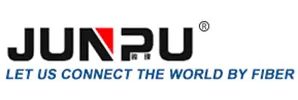
-
Home
-
Products
- Solution
- WHY JUNPU
- Services
- Resources
- News
- Contact Us

A fiber optic distribution box (FDB) is a protective enclosure for managing fiber optic cables. It organizes connections, splices fibers, and distributes signals in networks like FTTH (Fiber-to-the-Home) or FTTB (Fiber-to-the-Building). The box ensures fibers stay safe from damage and environmental factors.
FDBs come in wall-mounted or pole-mounted designs. They work indoors or outdoors. Inside, they have adapters and splice trays to connect fibers neatly.
· Splits and routes optical signals.
· Protects fibers from dust, water, and physical stress.
· Supports splicing, branching, and termination.

FDBs vary by use, installation, and capacity.
· Indoor FDBs: Used in offices or homes. Lower protection (e.g., IP20).
· Outdoor FDBs: Built for harsh weather. Higher protection (e.g., IP55).
· Wall-mounted: Fixed on walls. Common in buildings.
· Pole-mounted: Installed on utility poles. Used on the streets.
· 16-fiber: For small setups like homes.
· 24-fiber: For medium networks like offices.
· 48-fiber: For large systems like data centers.
Fiber Distribution Box vs. Junction Box
Many confuse FDBs with fiber junction boxes. Here’s the difference:
Feature | Fiber Distribution Box (FDB) | Fiber Junction Box |
Purpose | Splits/manages multiple fibers | Connects/protects single fibers |
Size | Larger | Smaller |
Use Case | Network hubs, data centers | Device connections |
FDBs handle complex routing. Junction boxes are for simple links.
Picking an FDB depends on three factors:
· Count current fibers.
· Plan for future expansion (e.g., 24-fiber for growth).
· Indoors: Lightweight, easy-access designs.
· Outdoors: Weatherproof (IP55+), sturdy materials like SMC.
· ABS plastic: Affordable, good for most cases.
· Metal/SMC: Best for extreme conditions.
Check splice tray space. More space eases maintenance.
Yes, if rated IP55 or higher. These resist rain, dust, and UV rays.
From 16 to 48+ fibers. Larger FDBs suit data centers.
10-20 years, depending on the material and environment.
Fiber distribution boxes are essential for organized, reliable fiber networks. They come in types for different uses—indoors, outdoors, small or large scale. Choosing the right one ensures long-term performance. Focus on capacity, environment, and durability when selecting an FDB.
 Call us on:
Call us on:  Email Us:
Email Us:  Wanhua Science and Technology Park, No. 528, Shunfeng Road, Donghu Street, Linping District, Hangzhou City, Zhejiang Province
Wanhua Science and Technology Park, No. 528, Shunfeng Road, Donghu Street, Linping District, Hangzhou City, Zhejiang Province